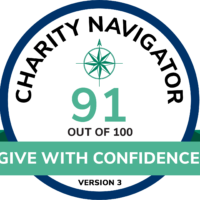
When my friend Tara, asked me to write a short piece on my experience of being her caregiver, I questioned whether her daughter or husband may be better placed to do this given they are with her daily. However, I have known Tara since the disease first revealed itself 24 years ago, even before it had a name. I have spent long periods of time with Tara on what we call our “excellent road trip adventures” driving to Southern California for clinical drug trials and GNE Myopathy (GNEM) events.
My work schedule, as a home health physical therapist is flexible, so I’m blessed with the ability to drive and manage equipment, supplies, and logistics; this is the form that my caregiving has taken. I accompany Tara on these clinical appointments or events three to four times a year. When I cannot drive her, Tara makes the exhausting 11 hour journey by public transport. Participating in a clinical study requires a huge commitment of time, as well as physical, mental, and emotional energy, with no guarantee of a favorable outcome. However, this is the sacrifice Tara is willing to make in order to help doctors and scientists understand the disease and find a viable treatment so that future generations can be spared of the challenges.
Realizations:
As Tara’s driver, friend, and caregiver on our road trips, I have come to some startling realizations: First, I appreciate that in our relationship, and especially on these trips, Tara is also a caregiver to me. She is my emotional caregiver and morale booster. She is grateful and positive, which envelopes me. She always does as much for herself as she can in order to ease my job. She watches out for me and my wellbeing; making sure I drink enough water and eat properly. She helps me remember tasks and organize the unique logistics of traveling with a wheelchair-user. We joke that “I am the body and she is the brain, so between the two of us we make one whole person”. Before every seven hour trip to Los Angeles, I experience a great deal of anxiety because I know that I am responsible for our safety. Many things are not in my control, such as traffic, weather, road hazards etc. Nevertheless, I know that I can depend on Tara’s mental agility and attention to help me remember procedural details. (Once I was in too much of a hurry and forgot to close the van’s sliding door before starting off. It was good to have a calm reminder!). She is another pair of eyes to watch for potential traffic hazards – She is also our navigator. Tara does all of this with good humor and patience. Of course, I enjoy her company and we have a lot to talk about on these escapades. We also have the van filled with all our favorite religious icons for protection and safety. We ask a blessing before every trip and we give thanks for every safe arrival back on our home turf.
Another realization is the lack of American with Disabilities Act (ADA) compliance that we encounter. Even though technically a facility or building is in compliance, quite often functionally it is not. Doors can be so heavy and hard to push that even I struggle with them. A handicapped person traveling alone would have to sit and wait for help, which is demeaning, not to mention inconvenient. The corners of sidewalks may be ramped, but still have large bumpy edges that make it difficult or impossible to push a wheelchair over, even with the help of an able-bodied caregiver. We have seen unreachable paper towels and toilet paper in public “handicapped accessible” restrooms, faucets that require extra grip strength, beds in accessible hotel rooms that are too high, limited aisle way space in stores etc. Now, instead of getting defensive I have decided to take pictures of the inadequate conditions and contact the right people about them.
In the course of traveling with Tara, I have met other patients of various ages, and in various stages of the disease. It’s stunning to me how open and vulnerable they are in sharing their innermost fears and intimate struggles with each other and with me, an outsider. I am amazed by their courage and humor, and their quest to find ways to improve their function in spite of the disease. Sometimes I can give them suggestions based on my experience as a physical therapist. Sometimes what they need is something as simple as a door opened, a plate of food carried to the table, or hair pulled back into a ponytail and I’m happy to help out. Other times, I feel guilty for being too self-indulgent, like being too slow getting ready in the morning when I should be helping Tara get ready. I am not always as attentive as I should be and I think I could be in a state of gratitude more of the time. When I see the spouses who live with the GNEM patients, who are so devoted and attentive on a constant daily basis, I am humbled, and awed by their integrity and persistence in the face of great difficulty. I think of how different it is for me being only an intermittent caregiver. I don’t know if I could do this constantly, with a kind and patient, charitable attitude.
What I have learned about myself:
I have learned a lot about myself – my strengths and my weaknesses, from traveling with Tara as her driver, helper and friend. One thing I have learned, and know for sure with Tara, care-giving is a two-way street.







